This Festival Friday we’ll take you to Mamoiada, a village in inland Sardinia. Mamoiada is the home of mamuthones and issohadores, mysterious masked characters whose origin is all but unknown. We visited in occasion of St Anthony’s festival on January 17th, when mamuthones and issohadores parade around burning bonfires.
“I can’t let you in. I can’t just let anyone in. Sorry.” says Basilio, one of the eight issohadores of Mamoiada. “It is more than getting dressed. It is a metamorphosis” he adds, as he slams the door of the Mamuthones and Issohadores Association in my face.
I am not allowed to enter the courtyard, where the preparation of the masked characters is taking place. I sneak towards a door left ajar, and glimpse moments of a century-old ritual, pervaded with superstition. The men, dressed but not yet masked, circle around a bonfire, lie on the floor, help each other strapping bells on their backs. The straps are pulled so tightly that some men seem to be about to collapse from the weight of the bells, up to 40 kilos, and lack of oxygen. Bells are arranged, straps buckled and unbuckled, crossed together. Men jump and shake their backs again and again, bells jangle. When the sound is right, the mask is worn. They are no longer men. They have become mamuthones.
The day of Sant’Antonio, January 17th, is one of the most popular festivals in Sardinia; the saint is the protector of animals and fire, and each year bonfires are lit to symbolise purification and renewal, to ward off the cold winter and welcome spring.
In the village of Mamoiada, the bonfires of Sant’Antonio offer a supernatural background to another event, a lot more important to local people; the first yearly procession of mamuthones and issohadores, masked characters unique to the town. Smoke billows in twirls from the fires, a sleety rain falls, interspersed with bright spells; then a double-arched rainbow appears, crossing the mountainous expanse east of town.
Many Sardinians will tell you Sardinia is not Italy. Here, people speak another language, completely unintelligible to Italian speakers; some refer to Italy as ‘the continent’, with a mixture of indifference and contempt. Barbagia is another place altogether. Far from the beaches of coastal Sardinia, Barbagia is a tough place of mountains and shepherds. The name of the region itself derives from Barbaria, barbarians, the name given by the Romans to the people of the land, proud and elusive, who never subjected to their rule.
I am no longer in Italy; I am in Barbagia. Mamoiada lies in the heart of the region, tucked among a mountain massif riddled with streams and caves, where nomadic shepherding is still practiced.
The village is surrounded by squat, windswept mountains, covered by gnarled olive trees and myrtle bushes. The wind blows, thick with sleet. This is an isolated land. A place where the harsh territory allowed people to preserve their culture, language and tradition.
Mamoiada’s masked characters are an example. Mamuthones wear grotesque wooden masks, painted black. They are all handmade by local artisans, all different to one another. Some have giant hooked noses, others have protruding foreheads, pointed chins and grimacing expressions, lending mamuthones a spooky, devilish appearance. They wear vests of dark sheep fur and huge copper bells, arranged like tortoise shells on their backs. Issohadores are their lighter counterpart, vivacious and cheerful; dressed in a red tunic with a black bandolier, an embroidered, fringed shawl tied around the hips, a black hat held together with a colourful bow.
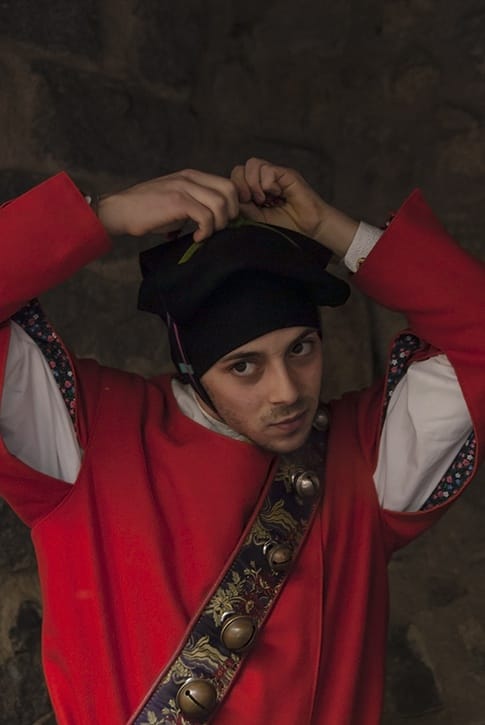 When the characters reach the main bonfire, in front of Mamoiada’s largest church, the procession starts. Twelve mamuthones in two rows, surrounded by eight issohadores. Their movement has been defined by anthropologists as a ‘danced procession’, because of the grave yet musical, rhythmical pace it follows. Mamuthones move slowly, with heavy steps, as if they were chained. Their backs are curved under the weight of the bells, under the coarse vests, under the grimacing masks. Rhythmically, they shake their right shoulder, the left foot advances, bells clang in unison. Issohadores move with agile, deft steps, surrounding the darker figures as if they were hoarding them, guiding them, then confronting them.
When the characters reach the main bonfire, in front of Mamoiada’s largest church, the procession starts. Twelve mamuthones in two rows, surrounded by eight issohadores. Their movement has been defined by anthropologists as a ‘danced procession’, because of the grave yet musical, rhythmical pace it follows. Mamuthones move slowly, with heavy steps, as if they were chained. Their backs are curved under the weight of the bells, under the coarse vests, under the grimacing masks. Rhythmically, they shake their right shoulder, the left foot advances, bells clang in unison. Issohadores move with agile, deft steps, surrounding the darker figures as if they were hoarding them, guiding them, then confronting them.
Their function is complementary; mamuthones do not interact with the crowd, while issohadores skip across the road, catching young women with the soha, the slim reed rope after which they are named. One issohadore, at the head of the group, has the function of setting the pace of the procession; every now and then he lifts one arm, then waves, the mamuthones answer shaking their bells three times, in rapid succession.
The public looks on speechless, silent and composed, as if they were assisting to a religious procession; looking scared, then between awe and bewilderment, hypnotised by the slow, yet imposing gait. There is no joy; the atmosphere wavers between austere and otherworldly. No one dares speak. The parade continues, from early afternoon to late night, repeating the dance at each of the thirty-eight bonfires in Mamoiada.
The origin of mamuthones is unknown. They have been in Mamoiada as long as anyone remembers; it is likely that the town itself has taken its name from them. Now, they are a symbol of Mamoiada’s identity. “We were born to be mamuthones” said Augusto, standing with his nine year-old son in a small mamuthone costume. “The first time, he was eighteen months old”.
The pace of mamuthones is seen by some scholars as an interpretation of the pre-Christian limping dance in honour of Dionysus, the god of vegetation, that each year died in winter, and was born again in spring as the grass in the fields, bringing rain and fertility. According to this theory, this is why the first mamuthones procession of the year is held on the day of Sant’Antonio, celebration of spring.
Other scholars see the Mamuthones as an animal metaphor; the bells on their back are the bond between shepherd and animal, their shared destiny of working in the fields, of roaming the mountains.
Mamuthones have also been defined as a representation of the collective soul of Sardinia. The bells symbolise the yoke of subsequent dominations, from the Romans to the Vandals, from the Piedmontese to the Italians. The cavorting issohadores in their exotic costume are the invaders; the shuffling mamuthones, bent under their load, are the Sardinians, prisoners, forever shaking the bells of their pain and suffering.
At the end of the parade, in the dead of night and bitter cold, the characters return to their association, to undress, become men again. Then the party begins, wine flowing until morning. This time, everybody is welcome to join in.
Practical Mamoiada Info
- Mamoiada can be reached by bus from Alghero airport, changing buses in Nuoro
- Mamuthones and Issohadores parades happen several times throughout the year – Carnival is also a very nice time to visit!
- Book your accommodation well in advance as Mamoiada tends to fill up quick – here you can find all the hotels in Mamoiada and choose the best one for you!
Scroll down for more pics!

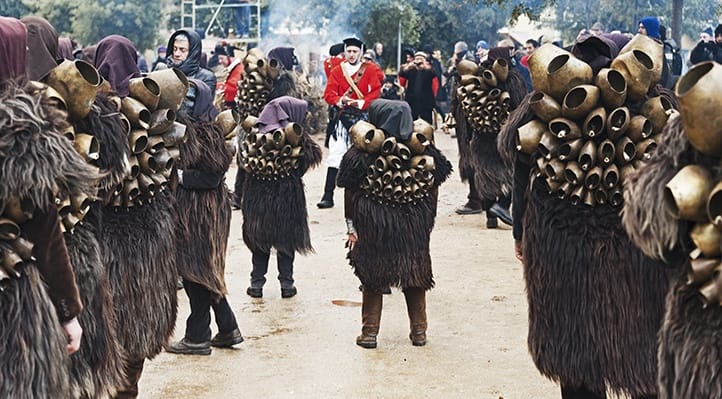
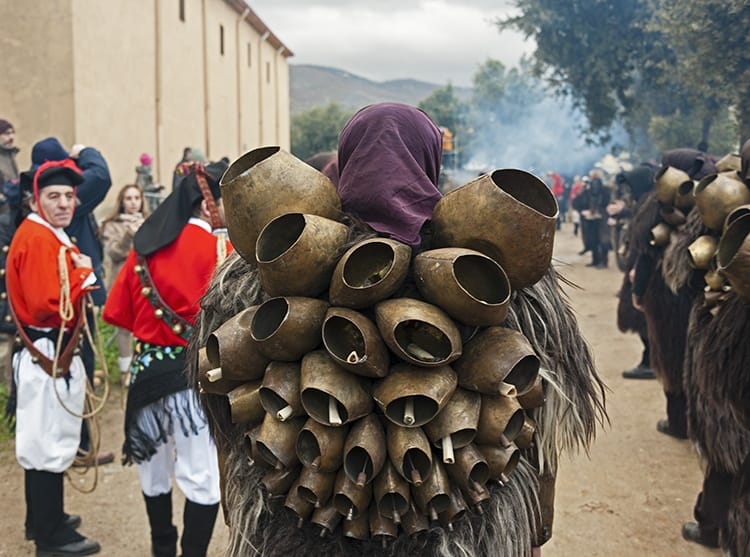
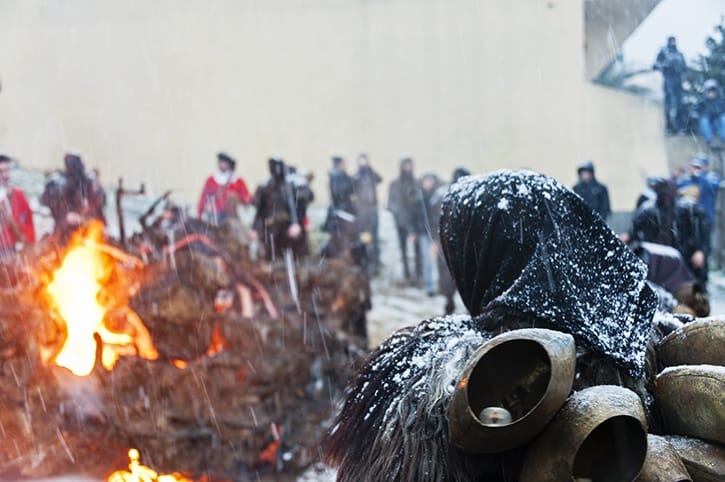
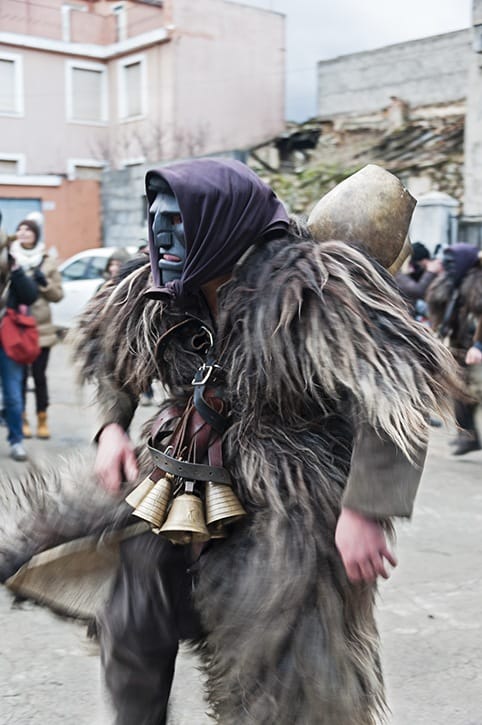
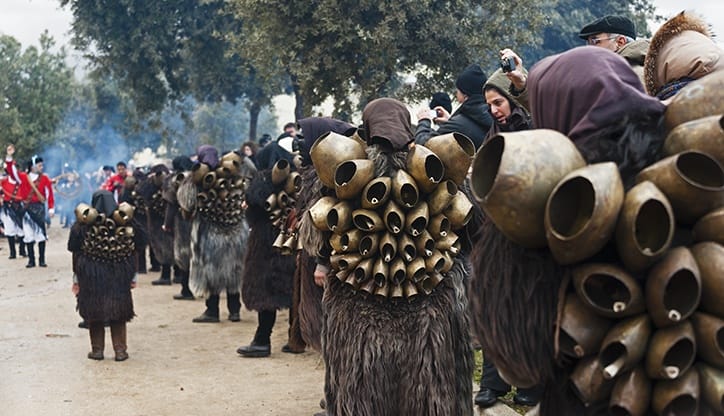
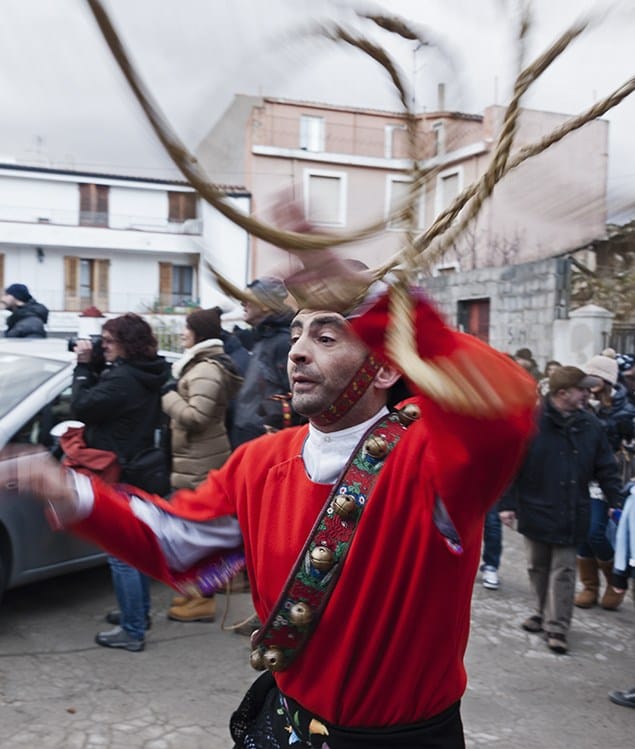
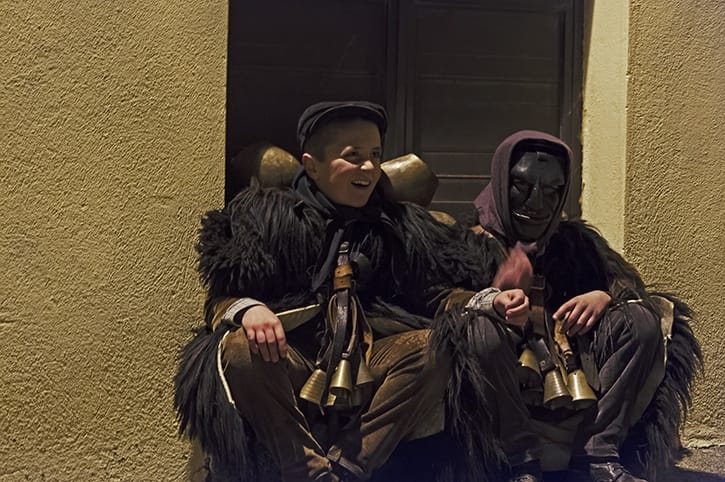
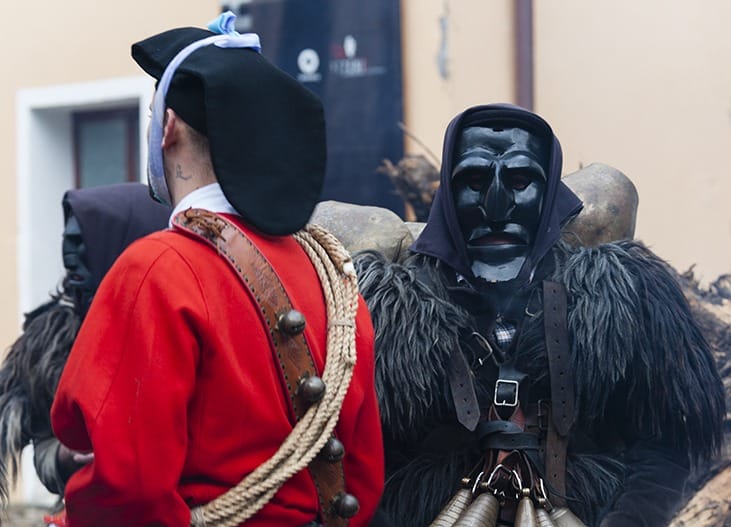
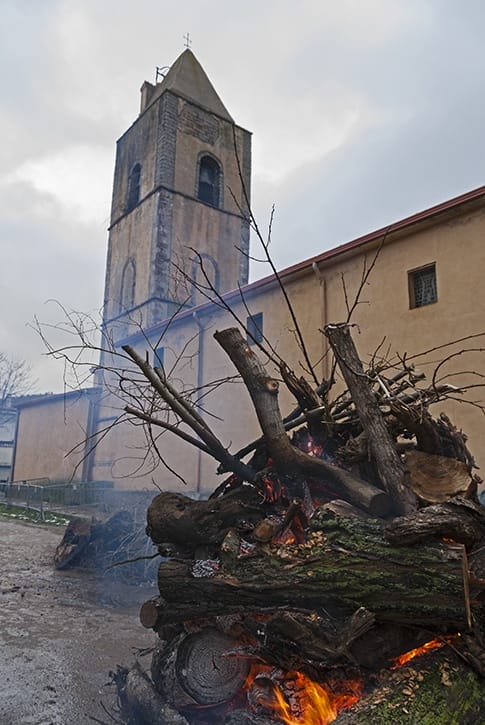

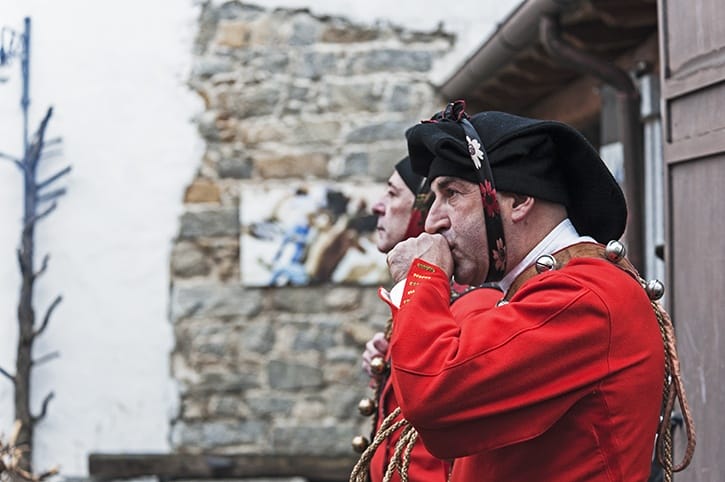

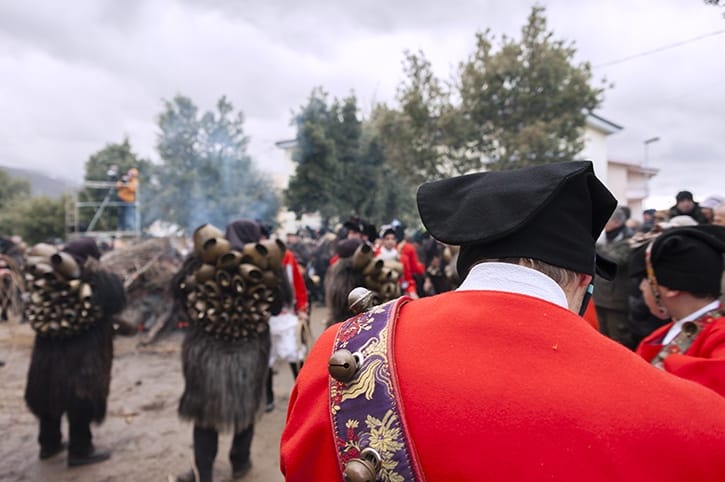
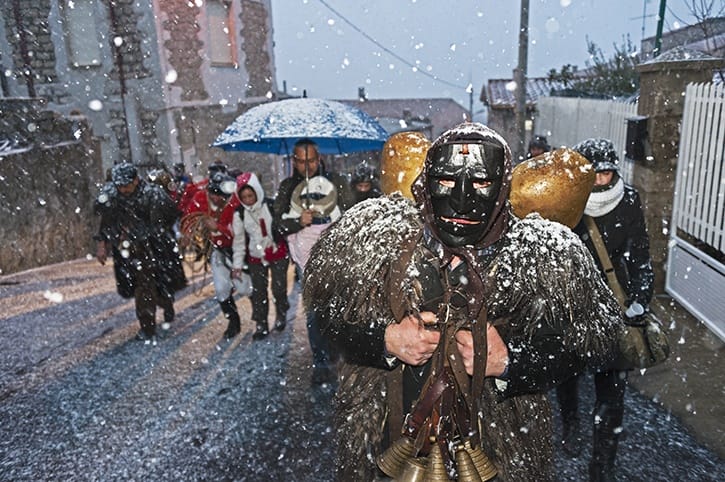
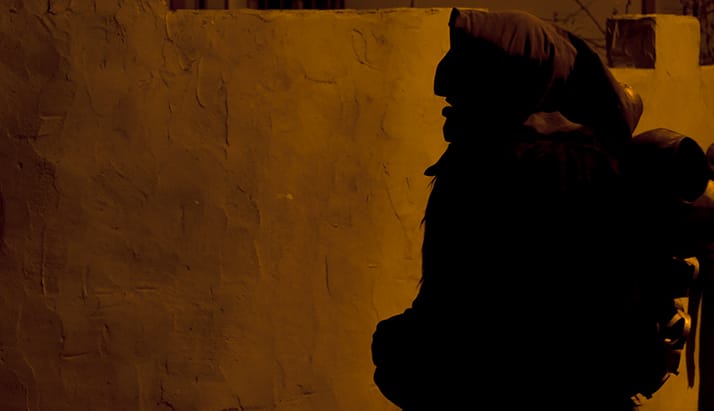
What a curious festival and it takes place just the day before my birthday. I love the details of the costumes the people wear. I have to admit I’m a bit ashamed of being Italian and never have had the opportunity to visit Sardinia, I must go soon though, I know it supposes to be stunning!
Thanks Franca for your comment! Glad you liked the pics! It is a great festival with a really eerie atmosphere, so different from what we usually associate with Sardinia… do try and visit one day! Enjoy your housesitting!
Fabulous! I’ve seen photos of this festival before but never seen it in real life. Your photos are fantastic and reading you article gave me goose bumps!
Thanks for your comment Kathryn! Glad you liked the article and pics! It is really a magical festival, you should definitely try and make it there one day!
This is s stunning festival, I would love to be here at this time of the year to capture this, and your images are already inspiring!
Thanks Noel, I’m happy you liked this post. Hope you get the chance to visit one day!
Wow…I definitely would love to see this one day. I was in Sardinia once during St. Eficio’s day and the Cagliari parade was fantastic. I’ve always wanted to go back. It was much different than this Saint’s day.
Thanks Corinne! I would love to go back for St Efisio, I have heard great things!
What a festival! What photos, you have an amazing eye.
Thanks SJ! It was an amazing festival indeed. Glad you love the pics!
Wow, you definitely are amazing, I lost the sense of time and totally immersed myself into this article. Thank you for that!
Thanks my dear Yara, this was one of my favourite travel experiences ever, and I’m so happy you liked it too! Hope to see you soon 🙂
Thank you so much for this! I enjoy seeing, learning about different cultures especially their older traditions, etc. Well done article and photos. I will check in and read your column from now on.
Thanks Candace! Hope you’ll enjoy following my blog 🙂
Great article and pictures…In England,January 17th is “Old Twelvy”,the old Twelfth Night from before the calendars were changed in 1752,and is the day for Wassailing to ensure a good crop of fruit in the New Year…might there be a similar reaason for the choice of date for this festival?
That’s really interesting! The tradition in Sardinia (well, in the whole of Italy) is to make bonfires on January 17th for the same reason so it’s very possible! Thanks!
Do you think that I could buy one of those masks?
I would really like to get my hands on one. Those masks are beautiful works of art.
Dear Simon
If you travel to Sardinia, you’ll definitely be able to buy some from the artisans’ own workshops. Alternatively, I have found this site http://www.tradizionisarde.com/vendita/2-maschere/9-maschere-sarde/pagina2 it’s only in Italian but maybe someone can help you?
Hope it helps!